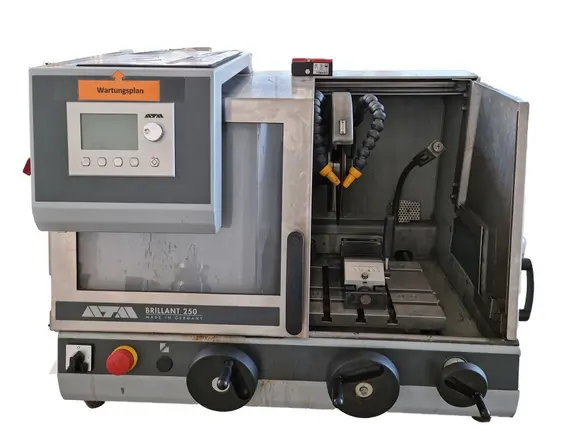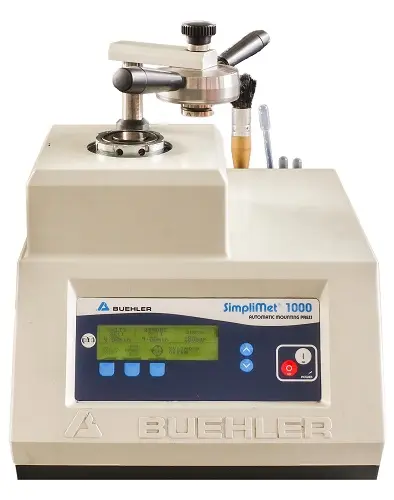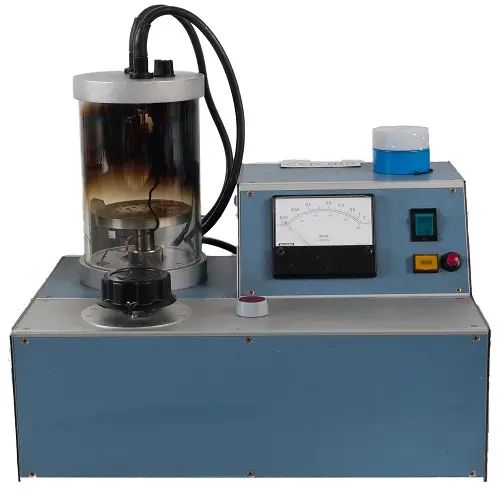The material analysis looks deep into the actual material. In this way, faults can be detected and eliminated. The entire analysis work is carried out at the Environmental Campus Birkenfeld by Prof. Dr. Stefan Trapp. He has been head of the Surface Technology Laboratory since its inception and can thus draw on many years of expertise in the field of material analysis.

Cutting by means of the precision cutting machine is used to remove small specimens from a large specimen body.
The constant cooling combined with the oscillating feed prevents overheating and deformation of the microstructure.
Technical data:
ATM Brilliant 250 wet cutting machine

Here, the specimens are positioned / fixed and then pressed with appropriate powder to form a 40mm specimen. This makes the specimens easier to handle for later processing.
Technical data:
Bühler SimpliMet 1000

This allows non-metallic surfaces to be made conductive by vapor deposition with carbon so that analyses can be carried out under a scanning electron microscope. Furthermore, special material analyses can be carried out.
Technical data:
Balzer Union CED 010
You are leaving the official website of Trier University of Applied Sciences